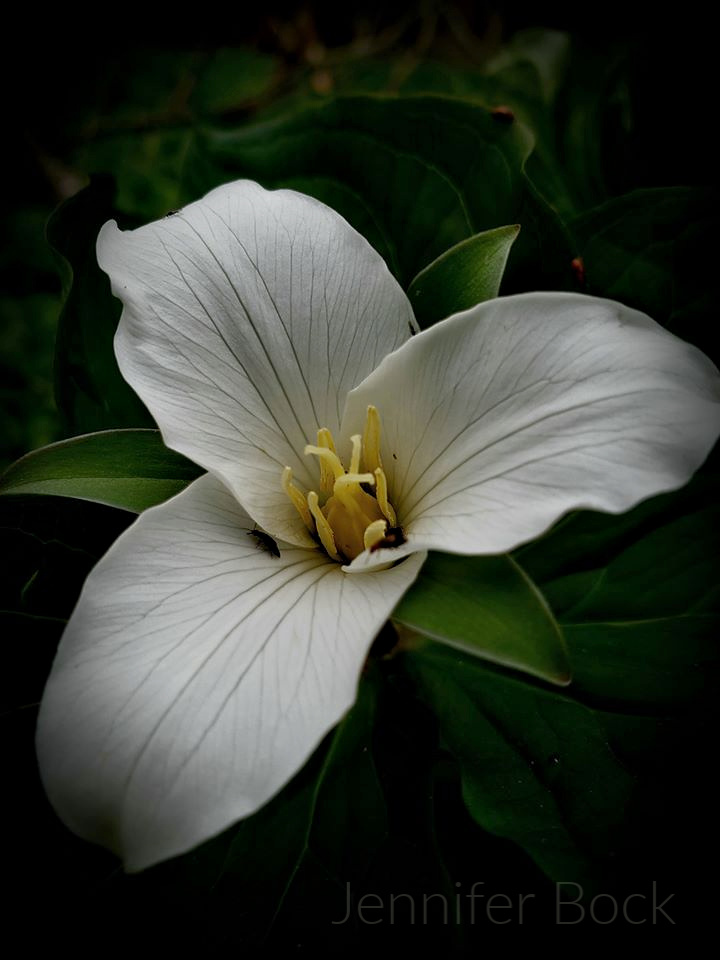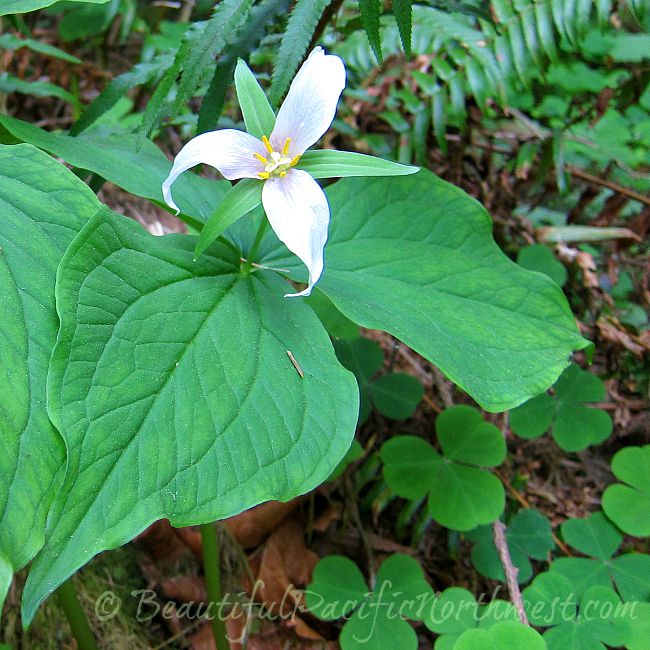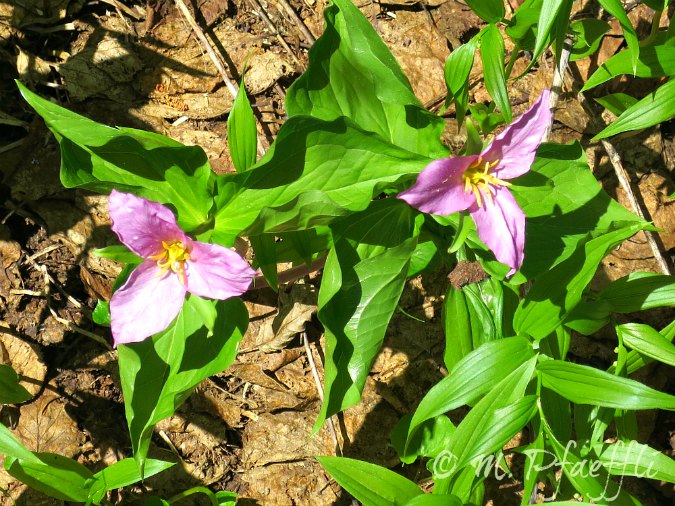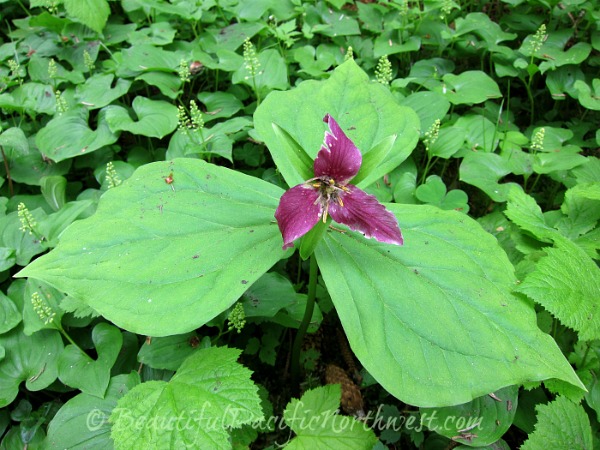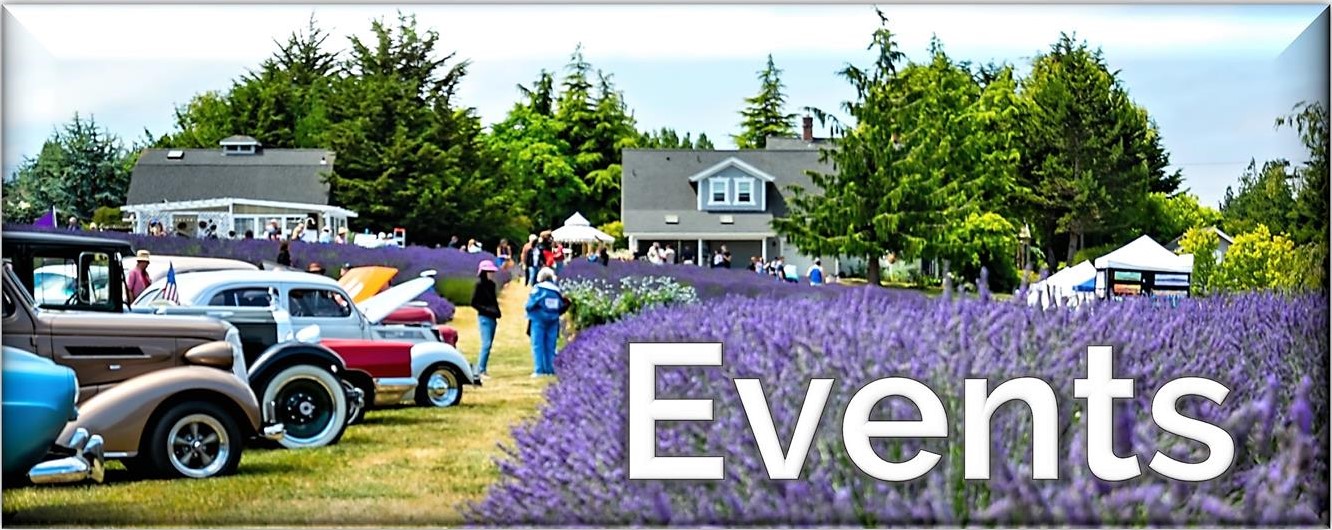Trillium Flower
Trillium Flower. Recognize trillium plants in the Pacific Northwest with these photos and descriptions.
It's a sweet surprise to come upon trillium in the shady forest here in the Olympic National Park or Olympic Peninsula. They are beautiful, a bit unusual, and unexpected. Dainty leaved flower bracts float above triple leaved whorls.
It's obvious how Captain Meriwether Lewis would be charmed into including it in the 150 specimens he chose to bring back with him on his return east during his expedition with William Clark in 1806.
Trillium, also known as wake robin, birthwort, or birthroot, is in the lily family.
Several species of trillium contain sapogenin, which is used as a uterine stimulant, thus the name birthwort, or birthroot. An astringent made from the root is also said to control bleeding and diarrhea and its edible leaves can be added to a salad.
The slender stems of the trillium plant grow from underground rhizomes producing a whorl of three leaves. Flowers extend from there, blooming white initially, but then turning pink to purple or red as they age.
They bloom mostly between February to April and can be found scattered about on the forest floor under the canopy of coniferous and deciduous trees. If left alone, the trillium will spread out to form a lovely carpet of spring green dotted with white flowers.
The favorite companion plants are oxalis oregana, sword fern and mosses, all common Pacific Northwest native plants.
Trillium Flower Propagation
Trillium easily and naturally thrives in woodland settings perfect for its survival here in the Pacific Northwest conditions of abundant rain and thick forest. But, they can also be grown in a cultivated garden. Just plant them in rich organic soil in the shade of a thick canopy of trees. Give them plenty of water with good drainage, watch out for snails and slugs, and be very nice to the local ant population.
Trillium are unusual in that they are spread by ants. Trillium seeds are attached to an elaiosome, a capsule containing protein and other nutrients which serves the sole purpose of attracting ants. The ants carry the entire package - seed and elaiosome - back to their nests to feed the larvae. When the elaiosome is consumed the ants dispose of the seed in a "garbage pile," basically their compost pile, thereby "planting" it in favorable conditions for germination. This method of propagation is known as myrmecochory, meaning underground seed dispersal via ants.
While they thrive in the Pacific Northwest, trillium flowers and plants are still considered to be delicate. It is possible to destroy the entire plant by removing just a small portion of it. Indeed, in some areas, certain species are on the endangered species list. Their symbiotic relationship with ants is definitely an advantage, helping to ensure its survival in the ecosystem.
When you're out trekking in the woods, do remember that if damaged, it can take possibly years for trillium to recover enough to bloom again.
Other links you may enjoy:
What Are Your Favorite Species of Wild Plant Life in This Area?
Tell Us Your Story and Share Your Photos!
Tell Us Your Story and Share Your Photos!
There is an incredible diversity and amazing array of beauty found in the Pacific Northwest flora! In this region, wild plant life can present as ancient giants, microscopic wonders, intoxicatingly fragrant, some edible, healing, others quite poisonous. Splashes of brilliant in color, or shrouded and mysterious, each one, amazing in its uniqueness...
Do you have a great story about the wild plant life found in the Olympic National Park? We'd love to hear about it and please share your photos as well! Just click into the title box below and go from there. When published, you'll have "your own" page on MyPortAngeles which you can share with friends or anyone who asks!
We're happy to ensure professional and amateur photographers get credit for their work. Leave us your name in the form below, and means of contact, website, or FB page info so we can link back to you.
